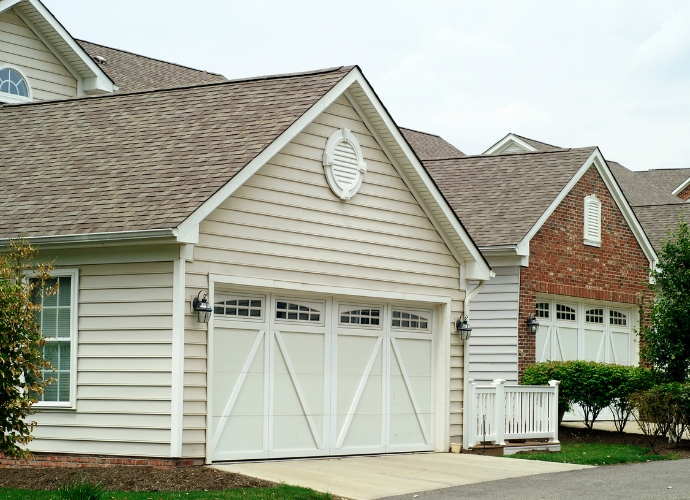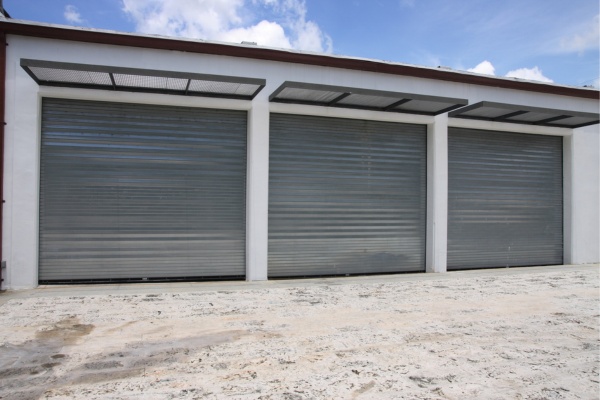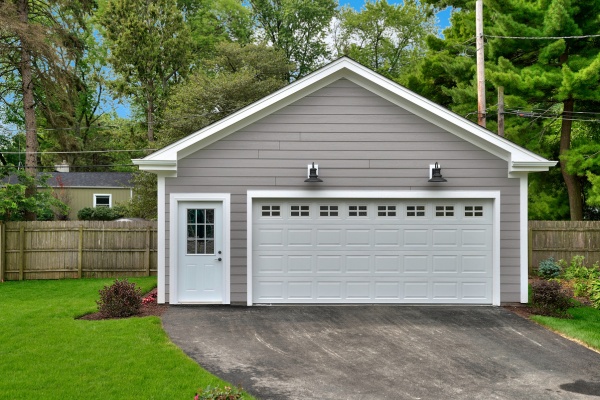Automating your garage door is an empowering blend of convenience, security, and smart home integration that can redefine your daily routine. Whether you want remote control via smartphone apps, voice commands through Alexa or Google Home, or seamless integration with your existing home automation system, turning a manual or traditional garage door opener into a smart device is easier and more accessible than ever. In this guide, discover the benefits, types of compatible openers, installation steps, and maintenance tips to help you automate your garage door with confidence.
What Are the Benefits of Automating a Garage Door?
Automating your garage door brings a multitude of advantages that enhance comfort, security, and overall home functionality. Here are the key benefits:
- Convenience Features: Open or close your garage door remotely without leaving your car or home. Remote Access: Control your garage door from anywhere using a mobile app, allowing instant operation on the go. Home Safety and Security Upgrades: Receive alerts if the door is left open and prevent unauthorized access with encrypted wireless technology. Time-Saving Devices: Automated garage doors streamline your day, saving time otherwise spent manually operating the door. Smartphone Control: Intuitive apps offer easy management of schedules, access history, and door status checks in real-time. Voice Control Integration: Use voice commands with Alexa or Google Home to operate the garage door hands-free. Seamless Integration With Home Automation Platforms: Connect your system with popular platforms like IFTTT and Z-Wave for advanced routines and IoT device coordination.
Upgrading your garage door to automatic operation not only boosts comfort but also forms a critical part of your home’s broader security system, enhancing peace of mind.


What Types of Garage Door Openers Support Automation?
Not all garage door openers are created equal when it comes to automation compatibility. Understanding which options exist will help you choose the best fit:
- Wi-Fi Garage Door Openers: These openers come with built-in wireless technology to connect directly to your home network for app and voice control. Motorized Garage Door Openers Compatible With Smart Technology: Many modern motorized systems offer retrofit capabilities or native integration with home automation. Wireless Technology and Sensors: Advanced garage door sensors detect door position and movement, providing real-time status updates and safety features. Battery Backup and Power Outage Reliability: Systems with battery backup ensure your garage door remains operational during power failures, maintaining security and convenience.
Selecting a reliable system with robust wireless connectivity and support for smart home platforms ensures smooth opener installation and long-term usability.
How Can I Automate My Existing Garage Door Opener?
You don’t always need to replace your entire garage door opener to enjoy smart features. Here’s how you can upgrade your current setup:
- Adding Wi-Fi Smart Garage Door Controllers: Retrofit controllers enable remote control and app connectivity without changing your opener. Installing Wireless Garage Door Sensors: These sensors monitor door status and trigger notifications or automation actions. Using Smartphone Apps for Remote Control: Many products include dedicated mobile apps to facilitate remote operation and configuration. Integrating With Voice Assistants: Connecting your garage door to Alexa or Google Home lets you use voice commands as a convenient alternative to remotes. DIY Automation Kits vs Professional Installation: Depending on your tech comfort level, DIY kits offer an easy route, while professional installation guarantees safety, optimal performance, and warranty coverage.
This approach empowers homeowners with flexibility, enabling a smooth transition toward a smart garage door without heavy modifications.
What Are the Steps to Install an Automated Garage Door System?
Installing an automated garage door system involves careful planning and execution to maximize safety, compatibility, and functionality.
Planning and Compatibility Checks
- Verify your current garage door opener's model and compatibility with the smart controller or automation system you plan to use. Assess the existing power supply and wiring to ensure they meet the requirements for the new system.
Installation Process
- Mount the smart controller unit securely near your existing opener according to manufacturer guidelines. Connect garage door sensors and remote controls wirelessly or through hardwiring as specified. Configure your Wi-Fi network access and complete app setup for remote control and notifications.
Safety and Security Setup
- Establish access control by adding keypad entry or multi-user authentication if supported. Enable child safety features, such as auto-reverse sensors and motion detectors, to prevent accidents. Test the entire system thoroughly to ensure reliable operation and alert functionality.
An easy installation plan combined with thorough safety protocols ensures your upgraded system operates smoothly and protects your household.
How Do Smart Garage Doors Integrate With Other Smart Home Devices?
Integration is a core advantage of automating your garage door, making it part of the larger IoT ecosystem in your home.
- Communication Protocols: Most smart garage systems use Wi-Fi or Z-Wave to communicate with other devices and hubs. Using Hubs or Automation Systems: Platforms like SmartThings or IFTTT enable custom automation routines linking your garage door to lighting, security cameras, or thermostats. Voice Command Routines and Scheduling Automation: Create schedules and voice-triggered scenes (e.g., "Goodnight" command closes the garage door along with locking doors). Combining With Home Security Systems and Automated Gates: Expand your home security by integrating the garage door with alarm systems and automated perimeter gates.
Such deep home connectivity enhances your smart home’s efficiency, security, and ease of use.
What Maintenance and Troubleshooting Should I Know After Automating My Garage Door?
Maintaining your automated garage door ensures longevity and reliable performance:
- Regular Sensor and Motor Inspection: Check for dirt, alignment issues, or wear that could affect sensor accuracy or motor function. Battery Backup Maintenance: Test and replace batteries periodically to guarantee operation during power outages. Diagnosing Common Issues and Opener Repair Tips: Troubleshoot intermittent connectivity, unresponsive remotes, or stuck door movements promptly. Professional Repair Services and When to Call Them: For complex repairs, hardware replacement, or safety concerns, enlist certified garage door repair services.
Consistent maintenance reduces downtime and enhances your garage door automation system's reliability.
How Can I Ensure My Automated Garage Door Is Secure?
Security remains paramount when automating your garage door. Consider these strategies:
- Security Upgrades: Opt for encrypted wireless signals to prevent hacking or spoofing attempts. Access Control Best Practices: Regularly update PIN codes and restrict guest user access to authorized individuals only. Alerts and Notifications: Activate real-time mobile alerts for door activity, ensuring you stay informed about unexpected openings. Preventing Unauthorized Remote Access: Use strong passwords, two-factor authentication when available, and keep firmware updated.
A secure automated garage door system integrates seamlessly into your home security framework, safeguarding your property and loved ones.
Comparison of Top Smart Garage Door Openers
Feature Openers with Built-in Wi-Fi Retrofit Controllers Available Battery Backup Voice Assistant Compatible Price Range Wi-Fi Connectivity Yes Some models Yes Alexa, Google Home $$ - $$$ Easy Installation Moderate Easy Varies Yes $$ Security Features Encrypted signals Depends on system Yes Varies App Control Full app support Via controller app Yes YesChoosing based on your needs and budget ensures the best value and functionality for your garage upgrades.
Case Study: How Automating My Garage Door Improved My Daily Routine
Many homeowners report significant benefits after automating their garage doors — from eliminating the frustration of lost remotes to enhancing security when away from home. One user noted that integrating voice control allowed effortless operation during hands-full moments, while the remote access feature enabled granting trusted visitors temporary entry without physical keys. This example highlights how smart automation transforms everyday tasks into streamlined, stress-free experiences.

Energy Efficiency Considerations in Garage Door Automation
Modern garage door openers often incorporate energy-efficient motors and standby modes that reduce electricity consumption. Smart scheduling can close the door automatically during peak hours to limit heat loss or gain, improving home insulation. Selecting an energy-efficient garage door automation system contributes to lowered utility bills and supports environmentally responsible home improvements.
Impact of Automation on Home Insurance and Property Value
Automated garage https://hectorslub642.lucialpiazzale.com/which-garage-door-repair-companies-near-north-edmonton-offer-affordable-services-in-2025 doors can positively influence home insurance premiums by reducing burglary risks with enhanced security features. Additionally, smart home upgrades like automatic garage doors increase property value and appeal to tech-savvy buyers, making your investment beneficial beyond daily convenience.
Frequently Asked Questions
How do I know if my current garage door opener can be automated?
Most modern garage door openers support retrofit Wi-Fi controllers. You can verify compatibility by checking your opener’s model number and consulting the manufacturer’s website or product manuals.
Can I automate my garage door without replacing the entire opener?
Yes. Smart garage door controllers are designed to add automation capabilities to existing openers with minimal changes to your current hardware.
Is professional installation necessary for garage door automation?
Not always. There are many DIY automation kits that simplify installation; however, professional installation ensures safety compliance and system reliability, especially for complex setups.
What happens during a power outage with an automated garage door?
Many smart garage door systems include battery backups, allowing continued operation and preserving security even when power is disrupted.
Are automated garage doors safe for children and pets?
Modern automated doors incorporate child safety sensors and auto-reverse mechanisms to prevent accidents. It is crucial to test these safety features regularly.
Can I access my automated garage door remotely from anywhere?
Yes. With internet connectivity and a secure mobile app, you can control and monitor your garage door remotely from virtually anywhere in the world.
Automating your garage door is a smart home improvement that offers unmatched convenience, security, and connectivity. Whether upgrading an existing opener or installing a new smart garage door system, investing in automation elevates your home experience and safeguards your property. Begin your automation journey confidently by assessing your current setup, selecting compatible smart technology, and following best practices for installation and maintenance.